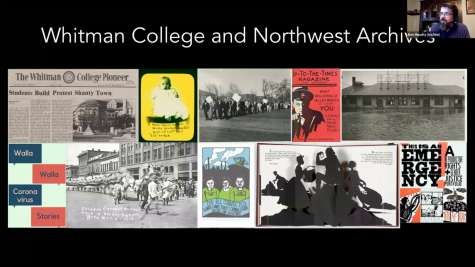Central American Immigration Crisis
February 11, 2016
In the last year, the global media has focused the majority of its coverage on the Middle East refugee crisis. Thousands of people have left countries like Iraq and Syria because of war. The media has covered almost every detail of the fighting in Syria and the journey migrants take from Syria to Germany and Sweden in hopes of obtaining asylum.
There is a similar, lesser known migrant crisis going on in Latin America. The crisis I am talking about is taking place in three specific Central American countries: Guatemala, Honduras and El Salvador. These three countries are experiencing a crisis of violence at the hands of drug gangs known as Maras. These groups commit terrible crimes and are incredibly powerful. To maintain their leverage they recruit young kids, some of them as young as 12 years old. If these children refuse they are beaten up or killed. Most of the time, these kids have only two options: join the gangs or leave their cities or towns to move to the United States where they have relatives.
In this last year, journalist Sonia Nazario of “The New York Times,” wrote an article in which she mentions that the United States has paid Mexico millions of dollars to deport immigrants that travel across the Mexican territory. The claim is supported by numbers: Mexico has already deported more Central Americans in 2015 than the United States. So far solutions to help this new wave of refugees have focused on improving shelter and detention places, but no long-term solution has been presented.
“If the corpses of central American immigrants floated like they do on the Mediterranean sea, we would have corpses floating all over Mexico. Migrants here are invisible, they end up in ditches or as sexual slaves,” said Martha Sanchez Soler, an activist for the migrants that cross Mexico. This quote points out the major problem: information. Many people ignore the Central American crisis because it is virtually invisible–they do not know the victims and the media rarely mentions the problem despite the fact that this wave of immigration started in 2010.
Another issue is that there is no official war going on. Despite these countries’ long histories of problematic relations there has not been a war-catalyzing event. By major event I refer to a massacre or battle. This problem is invisible in part because the media has failed to report it. Last year this situation was barely mentioned on TV–it only appeared on national programming because detention centers in the United States were over capacity. In December of 2014, the United States launched a program to reunite Central American children with their parents. After almost a year, the United States accepted only six Central American children in the first week of November of 2015. You can blame the bureaucracy, but the media and citizens have failed to put pressure on the U.S. government. The fact that the United States and Europe accepted thousands of Syrian refugees in the last two months and only six Central American kids speaks for itself.
Proposed solutions for this problem are short-term and involve policing and the use of force. As I mentioned in the first paragraph, the United States has been giving money to the Mexican government to stop Central Americans from entering Mexico. The United States could have given that money to Central American governments to try to solve their gang problems, but apparently those governments are even less trustworthy than the Mexican government.
The question at hand is not how many refugees the United States, Mexico or Canada can take–it’s why are these people leaving their homelands? Violence needs to be reduced in those countries. Since this is not a war, families are not recognized as refugees. So far the organizations that have tried to help the migrants are few and have almost no power against the corrupt governments and powerful drug cartels that make profits from migrants crossing Mexico. More funds should be allocated to these organizations instead of funding corrupt cops. However, this is still a short-term solution. The only long term solution is to help make Central American countries and their cities safer, provide aid for their poor, fund educational opportunities, etc. These actions will help these countries grow and reduce migration numbers, but such a long-term project is expensive and would be useless until systematic corruption was eradicated.










Dave Francis • Feb 11, 2016 at 4:40 pm
In this Obamas failing reign we have seen riots in the street, as unemployment is has become rife.
Why is it low income Black Americans are unable to find a job; why is low income white American unable to find a job, why is low income Hispanic or Latino’s unable to find a job, why is any low income citizens or green card holder cannot find a job, because the Republican establishment and Democrats in the hierarchy class have completely disregarded immigration laws. Many American and documented immigrants know full well that Obama has been pandering to millions illegal aliens. The majority of politicians are mainly interested in getting reelected and forgotten that they are in Washington to keep themselves available to the voter.
President Obama has caused more damage to this country, by adding another 9 trillion dollars to the earlier federal deficit. His far reaching illegal executive order has not even placed a key in the lock of the wide open access to our border and millions have poured in from every point below the Southern border. With the Obama orders the US Border Patrol have been restrained at the border, as are the local police across the country that have low esteem, and are hesitant to stop anybody in any sector. From the highest levels of government a new directive makes it impossible for agents to carry out their duties.
For decades the Southern border has remained poorly maintained and most of the sectors are nothing but a few strands of barbed wire. My own opinion it’s a clandestine conspiracy between the two relevant parties, with a limited amount of man power that intercept a few illegal aliens. Former president George Bush made the effort to build 700 miles of double layer fencing, but that faded away. For the Republicans not to build a wall, it’s to keep a daily ration of cheap labor for their Special interests who pay their way. The Democrats who are not barring any illegal immigrants, specifically families with children– the taxpayer becomes the provider. As a taxpayer, a working taxpayer you must keep supporting CHEAP LABOR and who collects the profits, the business owners. Something over 100 billion dollars a year, that would fiscally support our senior Citizens and more aftercare for the Veterans who have been forgotten by both the Left and Right.
The Democrat Hillary Clinton, the socialists as Bernie Sanders and the progressives will just leave a gaping hole in immigration enforcement and it’s already proven that Ted Cruz, Marco Rubio was involved with passing Amnesty. Then there is Jeb Bush, John Kasich will pledge to end the illegal alien war, but that will diminish as time goes by. Other than Donald Trump he is the ONLY strong lawmaker to stand against Congress. He will not only has the tenacity to build a wall between US and Mexico where bribery is rampant, but Trump has the guts to throw out every illegal executive order of Obama and his lapdogs and put in that 1000 mile wall, to obstruct not only illegal aliens, but recruit a new army of agents along the border. When we are talking about Hillary or Sanders, they are just telling there audiences exactly what they want to hear, but have no way of carrying these issues out. Trump just tells his people exactly how things are, and doesn’t try to present things that are impossible. Jeb Bush and the others of the establishment status will dance to the tune of their wealthy overseers and the Super PAC’s
As Trumps said the squeaks from the environmentalists about creatures unable to traverse the wall, will have no restraint on his construction; then from the point of view within the wall, more recruitment of ICE agents to end jobs going to unauthorized labor by raids on unworthy businesses who under the impression they are exempt from being audited utilizing Mandated E-Verify. Once companies realize that they can be fined or could even be incarcerated, they will start giving out pink slips; there will be a role for informants in every business nationwide to inform that illegal aliens are stealing the jobs from Americans and then the exodus will begin.
Trump will also take on the Overstays that seems forever have come to America disguised as the Average tourist, businessman and never left after their visa expired. New immigration laws will convert the Overstay status, to another illegal immigrant and therefore can be deported or repatriate themselves.
JUST KEEP REMEMBERING EVERY ONE OF THESE PERSONAGES WHO WANT TO GIVE THE ORDERS IN WASHINGTON ARE SUBSERVIENT TO THEIR WEALTHY DONORS, WHETHER THEY ARE A MEGA CORPORATION, A GIANT INDUSTRIAL MONOPOLY OR ANYTHING YOU CAN IMAGINE HAVE A TUBFUL OF DOLLARS TO TEMPT ANY OF THEM…EXCEPT FOR DONALD TRUMP? HE IS THE ONLY ONE THAT NOBODY ELSE HAS BEEN ABLE TO BUY.
Other than the fact I support Donald Trump as President, and send an article to newspapers on Facebook and also Facebook groups this Social organization has banned me temporary. I thought America was a country of free speech, but obviously it’s not tolerated by some individual Democrat, Liberal, or part of the Republican establishment. I use no bad words, expletives or anything, other than I believe in Trumps cause?